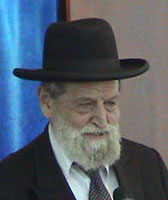Beit Midrash
- Sections
- Chemdat Yamim
- Parashat Hashavua
- Torah Portion and Tanach
- Shmot
- Shmot
What is the connection between Yeshaya’s prophecy from the time of King Chizkiya and the story of Bnei Yisrael’s enslavement many hundreds of years earlier? Rashi explains that the prophecy was intended to comfort Bnei Yisrael, reminding them how Hashem took a small group of people and rooted them in Egypt until they became comparable to the produce that covers the world. According to this, "haba’im" refers to the 70 descendants of Yaakov who descended to Egypt.
The Radak explains that the pasuk is referring to the time of the coming of Mashiach, when our nation will blossom. Israel, which has been without roots in exile, will return home and be rooted, on the bottom, and will flower, on the top. According to this approach, "haba’im" refers to the days that are to come.
The Malbim has a third approach. The pasuk is explaining the significance of the Nation of Israel, from where they stem, and what they have undergone to get to where they are. Yeshaya compared the remnants of the nation, after the great losses it suffered at the hands of the enemy, to a vine that was destroyed above ground, but its roots were intact. From those roots, it was rejuvenated and flowered. According to the Malbim, "habaim" is the growth of the vine that grew from the roots of what appeared as a dried up, hopeless plant.
In our days it is possible to see how all three explanations complement each other. In Egypt, after Yosef’s death, the descendants of Yaakov may have been tempted to give up hope of liberation, but Moshe was sent to inform them that its time had come. The few that had turned into many but had been enslaved, would blossom. So too, Yeshaya told the people of his time that they would survive the onslaught of the Assyrians, which had ravaged so much of the country, like their predecessors had survived the enslavement in Egypt.
Some 70 years ago, a large part of our nation was destroyed. Entire communities were obliterated. Two from a city and one from a community survived. One might have thought that there would be no restoration. The answer: "Israel will bud and blossom." After millennia of exile, liberation seemed impossible. However, our generation merited to see that there is always hope and that Hashem keeps His promises. The dry roots and the dead bones were resurrected. Rashi, the Radak, and the Malbim are all right. May we merit seeing the complete liberation.

Parashat Hashavua: Divinely Ordained Sibling Deceit
Rabbi Yossef Carmel | Cheshvan 5786

Hearing the Sound, but of What
Rabbi Yossef Carmel | 5771

Parashat Hashavua: The Journey … from Charan to Mt. Moriah and Beyond
Rabbi Yossef Carmel | Cheshvan 5786

























